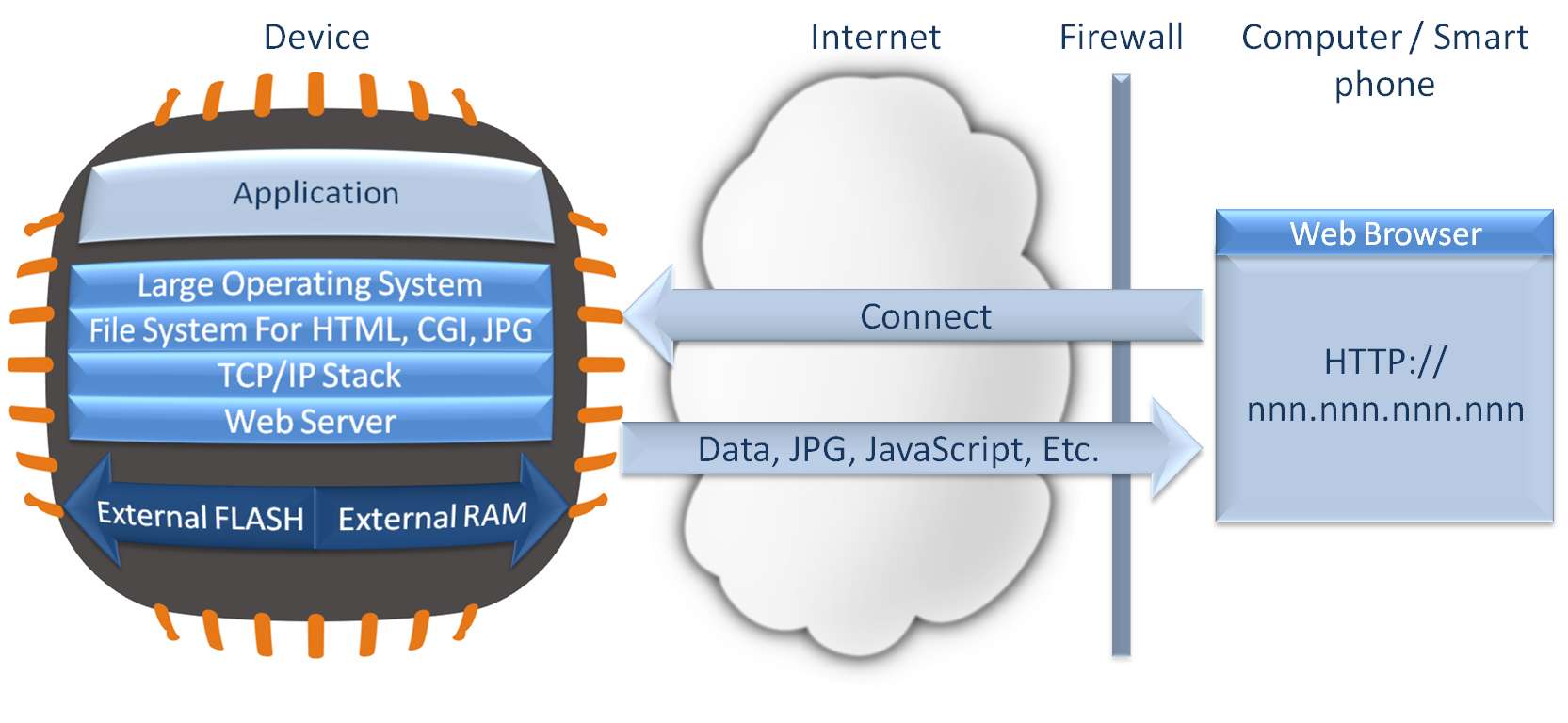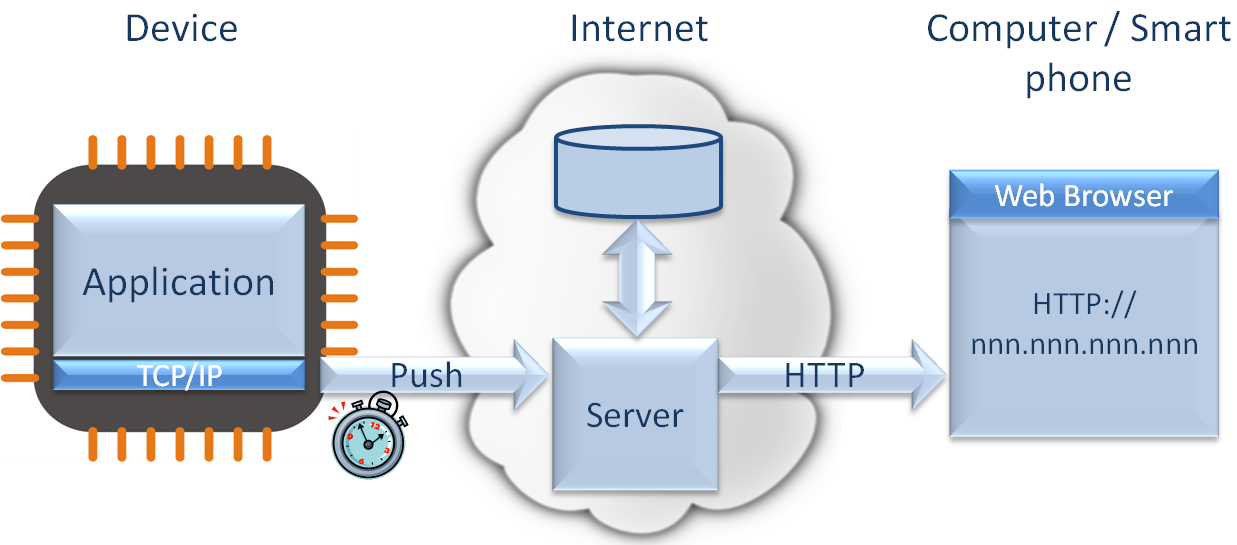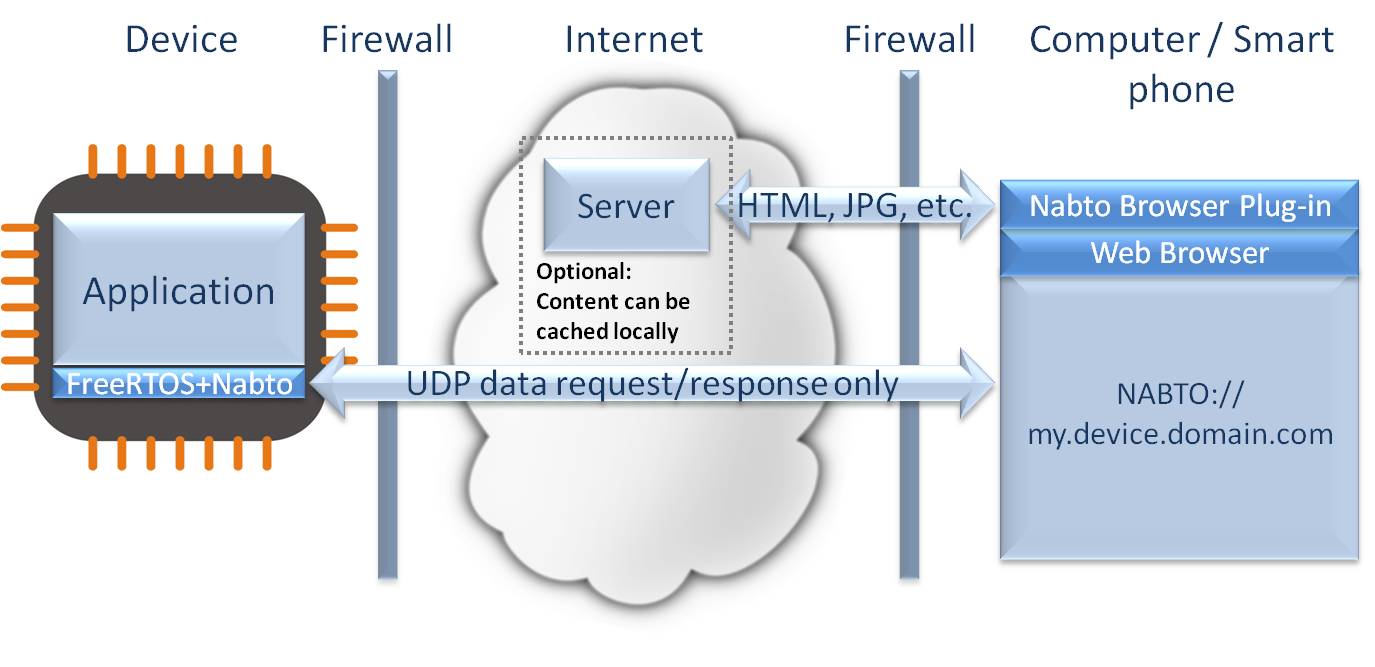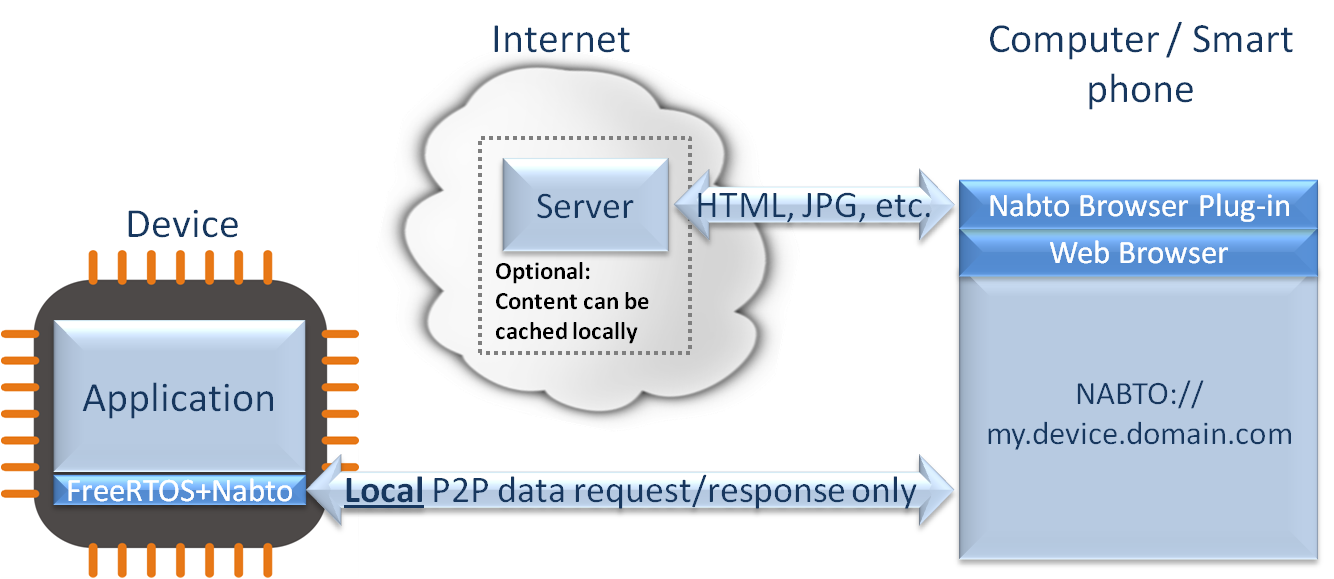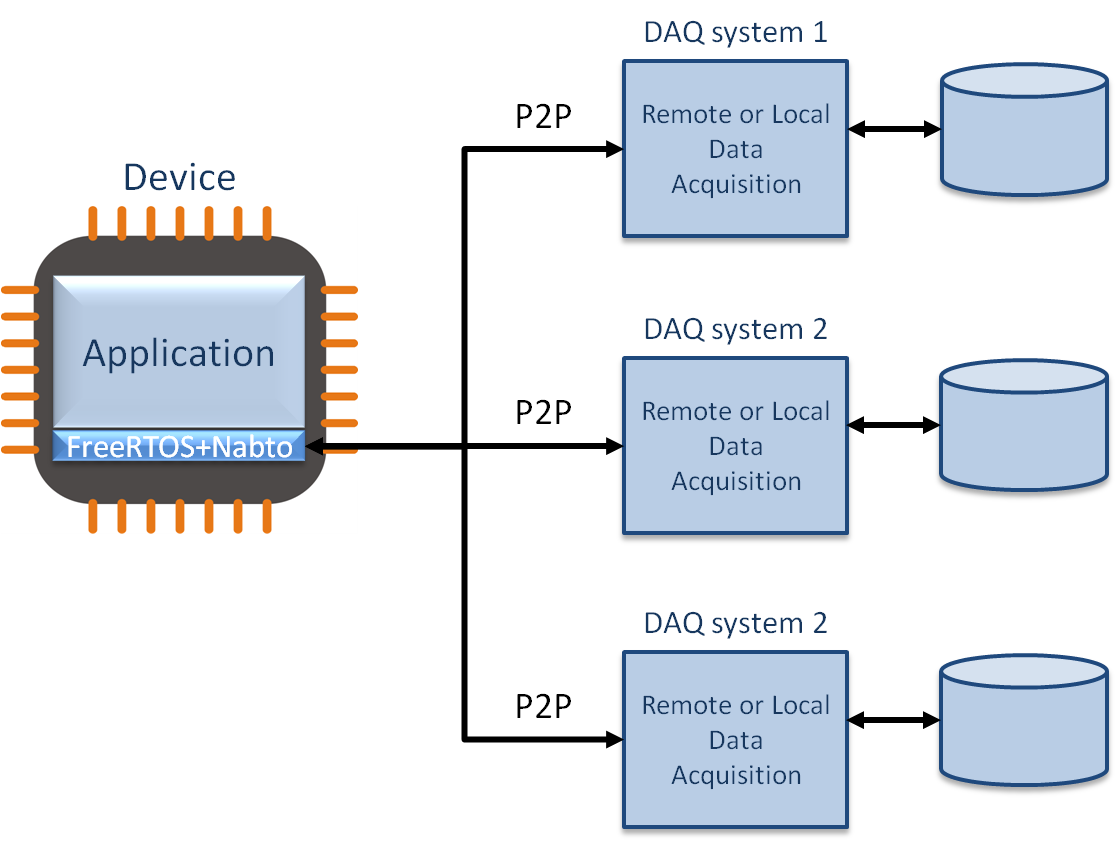| |||||||
|
Networking Technology ComparisonThe possibilities for Internet enabling devices are countless, and constitute a desirable product feature that personal and business consumers want, and are willing to pay for. Before a solution can maximise this potential it must first overcome a number of challenges, the greatest of which are listed in the following table:
By way of comparison, three Internet connectivity solutions are considered - two less innovative but more traditional solutions, and finally the FreeRTOS+Nabto solution:
Traditional Embedded TCP/IP Server Solutions
Traditional Inflexible Cloud SolutionsTraditional cloud solutions do not solve all the problems listed in the Traditional Embedded TCP/IP Server section, and introduce new potential problems of their own:
FreeRTOS+Nabto Peer to Peer Cloud Solution
|
|||||||||||||||||||||||||||||||||||||||||||||||



